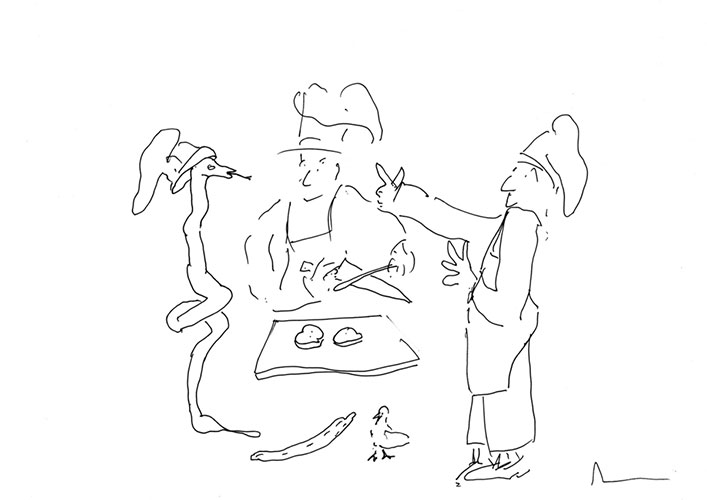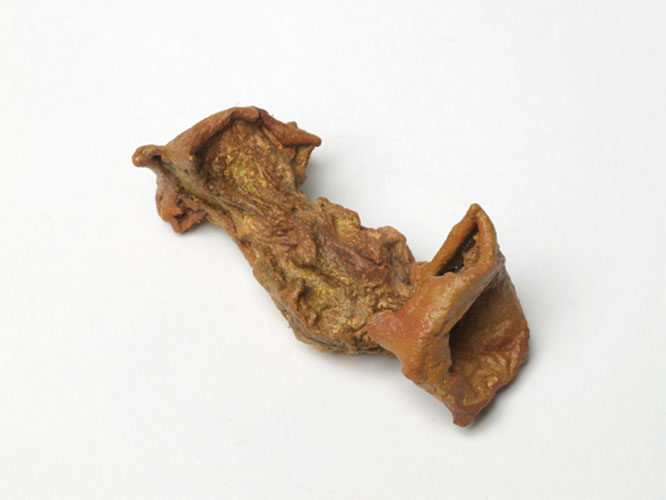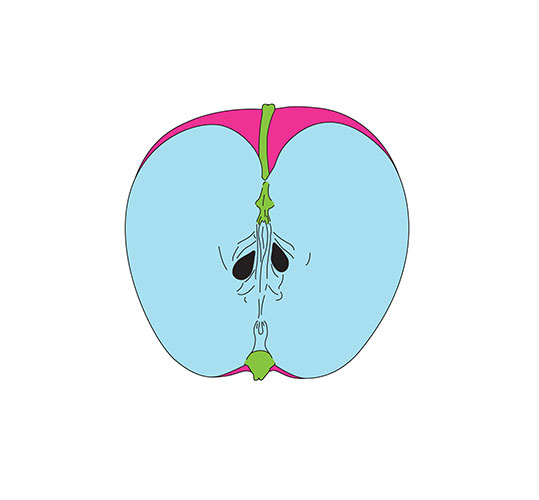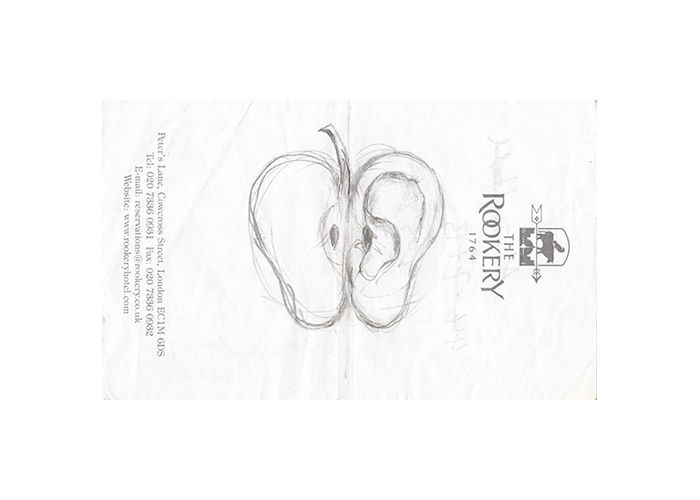









With an Apple I Will Astonish
4 Oct 2012–12 Jan 2013 Mindful of both paradise and the inferno, and recalling Cezanne’s vow to astonish Paris with an apple, Large Glass has asked artists and thinkers to consider the apple, its narratives, meanings and beauties across drawing, painting, object and sounds.
Secretive, transgressive, tight, crisp, bitter, sustaining and sweet, apples run through our culture like a small, firm promise in our hands. Both simply domestic and densely resonant, the apple has inspired countless artists and writers. It remains a symbol, not only of sin and The Fall, but also of knowledge, life, love and hope.
Apples may remind us of childhood, spices, baking, exciting thefts. They may confront us in sterile supermarket displays, or brighten our autumn hedgerows. They may breathe sweetness into our houses and please our mouths. Their names: Broxwood Foxwhelp, D’Arcy Spice, Keswick Codlin, Court Pendu Plat, Hubbardston’s Nonesuch, make poetry without poets. Apples glow in still lives, tempt in advertisements and hover between Eve and Adam like a threat, a joy, a naked pleasure.
And apples have history. They travel with conquerors, they change in changed lands, they have revealed the universe, they blossom surprisingly and intoxicate. Korbinian Aigner, know as The Apple Priest, was an outspoken critic of Hitler’s rise to power. He was deprived of his liberty for almost six years and came close to death in Sachsenhausen Concentration Camp. Transferred to Dachau, Aigner was able to work in ‘the plantation’, and there pursued his love of apples and orchards. Determined to create in the midst of destruction, he bred four new varieties of apple: KZ1, KZ2, KZ3 and KZ4. (KZ was the code used to designate a concentration camp). KZ3, his most popular creation has now been renamed the Korbinian Apple, in his honour. Al Kennedy
Secretive, transgressive, tight, crisp, bitter, sustaining and sweet, apples run through our culture like a small, firm promise in our hands. Both simply domestic and densely resonant, the apple has inspired countless artists and writers. It remains a symbol, not only of sin and The Fall, but also of knowledge, life, love and hope.
Apples may remind us of childhood, spices, baking, exciting thefts. They may confront us in sterile supermarket displays, or brighten our autumn hedgerows. They may breathe sweetness into our houses and please our mouths. Their names: Broxwood Foxwhelp, D’Arcy Spice, Keswick Codlin, Court Pendu Plat, Hubbardston’s Nonesuch, make poetry without poets. Apples glow in still lives, tempt in advertisements and hover between Eve and Adam like a threat, a joy, a naked pleasure.
And apples have history. They travel with conquerors, they change in changed lands, they have revealed the universe, they blossom surprisingly and intoxicate. Korbinian Aigner, know as The Apple Priest, was an outspoken critic of Hitler’s rise to power. He was deprived of his liberty for almost six years and came close to death in Sachsenhausen Concentration Camp. Transferred to Dachau, Aigner was able to work in ‘the plantation’, and there pursued his love of apples and orchards. Determined to create in the midst of destruction, he bred four new varieties of apple: KZ1, KZ2, KZ3 and KZ4. (KZ was the code used to designate a concentration camp). KZ3, his most popular creation has now been renamed the Korbinian Apple, in his honour. Al Kennedy
Edwina Ashton, David Austen, Bobby Baker, David Batchelor, Louise Cattrell, Hannah Collins, Connolly & McLaren, Michael Craig-Martin, Annie Freud, Martino Gamper & Francis Upritchard, Helena Goldwater, David Harker, Fergus Henderson, Craigie Horsfield, Dan Knight, Christian Marclay, Jeff McMillan, Jeremy Millar, Fiona Shaw, Gavin Turk, Alison Turnbull, Jane Wentworth
Writing by
AL Kennedy
Writing by
AL Kennedy